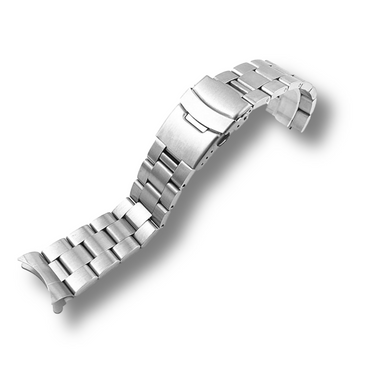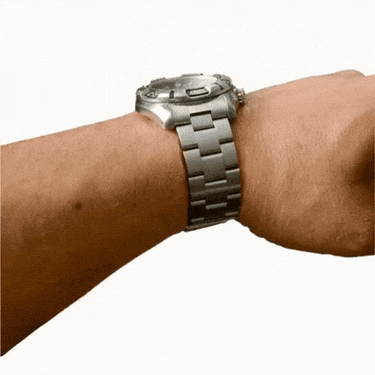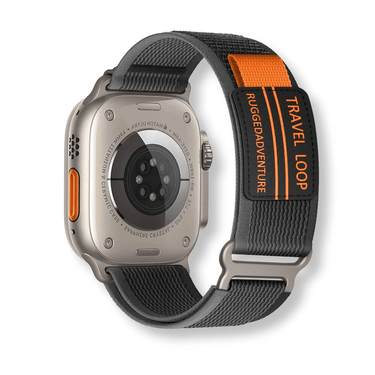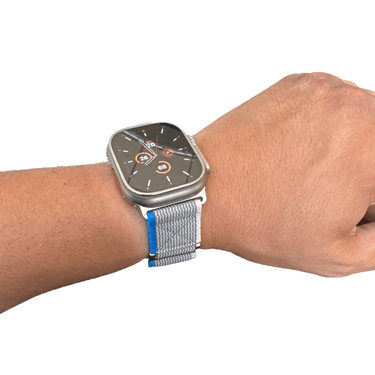The Importance of Authenticating Rolex Bracelets
Subheading: Ensuring Quality and Protecting Investment When it comes to luxury watches, Rolex is a name that needs no introduction.
Renowned for their impeccable craftsmanship and timeless design, Rolex watches have become coveted timepieces that exude both prestige and value. However, the authenticity of a Rolex watch goes beyond the case and movement; it extends to every detail, including the often-overlooked aspect of the bracelet.
A genuine Rolex bracelet is more than just an accessory or a functional component of a watch; it is an essential element that enhances both the value and integrity of the timepiece. Authenticating your Rolex bracelet not only ensures its quality but also protects your investment in this iconic brand.
A genuine Rolex bracelet is meticulously designed and crafted to meet exceptional standards. The materials used are carefully selected for their durability, aesthetic appeal, and ability to withstand the test of time.
Whether it's stainless steel, gold, or platinum, each link is precisely manufactured with meticulous attention to detail. Counterfeit bracelets may look similar at first glance but lack the finesse and quality synonymous with authentic Rolex watch bands.
Moreover, an authentic Rolex bracelet seamlessly integrates with the case design, creating a harmonious blend that reflects the brand's commitment to excellence. The bracelet's aesthetics play a significant role in how a watch feels on your wrist — whether it's an elegant Oyster or an iconic Jubilee bracelet — enhancing both comfort and style.
Not only does authenticating your Rolex bracelet ensure you are wearing a piece of horological excellence on your wrist, but it also safeguards against investing in counterfeit goods. Counterfeiters continue to create increasingly sophisticated replicas that deceive even seasoned collectors.
By taking steps to authenticate your Rolex strap or bracelet, you can protect yourself from being misled by imitations while preserving the value of your timepiece. In the following sections, we will delve into the crucial aspects of authenticating Rolex bracelets, exploring serial numbers, hallmarks, construction techniques, clasps and buckles, end links, bracelet codes, and how to spot counterfeit bracelets.
By equipping yourself with knowledge on these topics, you will have the tools necessary to make an informed decision when evaluating a Rolex watch with confidence. Remember: authenticity matters when it comes to owning a genuine Rolex timepiece.
Understanding Rolex Bracelet Types
Overview of different bracelet types used by Rolex throughout history
When it comes to Rolex bracelets, the renowned watchmaker has a rich history of producing a variety of styles to complement their timepieces. Genuine Rolex craftsmanship is evident in the meticulous attention to detail in components such as the clasp, case finishing, and engravings. Over the years, they have introduced several iconic bracelet designs that have become synonymous with the brand’s excellence and craftsmanship. Among these are the Oyster bracelet, Jubilee bracelet, President bracelet, and more.
The Oyster bracelet, perhaps one of the most well-known and widely used by Rolex, features robust links that provide both strength and comfort on the wrist. Its design incorporates three flat links connected using sturdy pins and screws.
The Jubilee bracelet, on the other hand, is characterized by its elegant five-piece link construction that offers a dressier look compared to the sportier Oyster bracelet. Additionally, we can’t forget about the President bracelet – a prestigious option reserved for Rolex’s flagship models like the Day-Date series.
Discussion on the significance of identifying the correct bracelet type for a specific model Identifying the correct Rolex bracelet type for a specific model is crucial when it comes to authenticating a timepiece. Each Rolex watch model typically has its own corresponding official strap or band option offered by the brand. Therefore, if you are examining or purchasing a pre-owned Rolex and notice an incorrect or mismatched strap or band attached to it, that should be an immediate red flag. Besides aesthetics and historical accuracy, identifying the right bracelet type is also important because it affects not only how well it fits with your watch but also its overall value. A genuine Rolex watch with its original matching strap or band intact will always hold more value compared to one with an aftermarket or non-matching accessory added later. Moreover, understanding which bracelets were available during specific production periods can help determine if there have been any unauthorized modifications or replacements made to the watch. Rolex enthusiasts and collectors often invest significant time researching and becoming familiar with the correct bracelet types for each model, allowing them to spot any inconsistencies that might indicate a potential counterfeit or altered timepiece. Rolex bracelets play a vital role in both the aesthetic appeal and authenticity of their watches. Familiarizing yourself with the different bracelet types used by Rolex throughout history can greatly assist in the process of authentication. By understanding the significance of identifying the correct bracelet type for a specific model, you can ensure that your Rolex timepiece remains true to its heritage and maintains its value as an exquisite luxury item.
Examining Serial Numbers and Hallmarks
How Serial Numbers Help Authenticate Rolex Bracelets
When it comes to authenticating Rolex bracelets, one crucial element to consider is the serial number. Every genuine Rolex bracelet is engraved with a unique serial number, which serves as a means of identification and verification. These serial numbers are typically located on the inner side of the clasp or end link.
By examining the serial number, you can gather valuable information about the production date and model of the Rolex watch. To verify the authenticity of a Rolex bracelet using its serial number, you can consult various online resources or reach out to authorized dealers who have access to official databases.
These databases contain detailed information about each watch’s production history and specifications, allowing you to cross-reference the provided details with genuine records. Be cautious of suspiciously low-quality engravings or missing serial numbers altogether, as these are telltale signs of a fake Rolex watch.
Different Hallmarks Found on Genuine Rolex Bracelets
Hallmarks play an essential role in determining whether a Rolex bracelet is genuine or counterfeit. These hallmarks are tiny symbols or engravings that indicate specific information about the bracelet's material composition and quality standards upheld by Rolex.
By examining these hallmarks closely, you can gain insights into the authenticity and craftsmanship of a Rolex bracelet. One hallmark commonly found on genuine Rolex bracelets is the crown emblem followed by an indication of precious metal content, such as "750" for 18k gold or "950" for platinum.
This hallmark assures that your bracelet is made from high-quality materials consistent with Rolex standards. Additionally, some bracelets may feature other hallmarks like "Rolesor" for two-tone combinations or "904L" denoting stainless steel used in modern models.
In addition to material-related hallmarks, many genuine Rolex bracelets also bear manufacturing marks that indicate their origin and quality. For instance, bracelets made in the United States may feature "USA" engravings, while those crafted in Switzerland might display "SWISS MADE" or "GENEVA." These manufacturing hallmarks not only attest to the bracelet's authenticity but also shed light on its heritage and production location.
When examining hallmarks, pay special attention to their depth and clarity. Genuine Rolex bracelets boast meticulously engraved hallmarks that possess crisp edges and precise detailing.
Conversely, counterfeit bracelets often exhibit shallow or blurry engravings that lack the finesse seen in authentic pieces. By scrutinizing these hallmarks along with other authentication factors, you can confidently differentiate between a genuine Rolex bracelet and a subpar imitation.
Analyzing Bracelet Construction and Materials
Different Materials Used in Manufacturing Rolex Bracelets
When it comes to Rolex bracelets, the brand's commitment to quality is evident in the carefully selected materials used. Stainless steel, gold, and platinum are commonly utilized to create these exquisite accessories that complement Rolex watches flawlessly. Rolex Straps crafted from stainless steel offer durability and corrosion resistance.
The brand's proprietary "Oystersteel" is a high-grade stainless steel alloy that maintains its luster even after years of wear. It not only adds a touch of elegance to your wrist but also ensures unmatched robustness.
For those seeking unparalleled luxury, Rolex Watch Bands made from gold are a popular choice. Whether it's yellow gold, white gold, or Everose gold (Rolex's exclusive rose gold alloy), these bracelets exude opulence and refinement.
Gold not only enhances the overall aesthetic appeal but also symbolizes wealth and prestige. If you desire the epitome of elegance and exclusivity, consider opting for a Rolex Bracelet crafted from platinum.
Renowned for its rarity and remarkable strength, platinum is incredibly resistant to wear and tear. Its natural white sheen adds an extra touch of sophistication to your timepiece while ensuring longevity.
Various Construction Techniques Employed by Rolex
Rolex is known for its meticulous attention to detail when it comes to bracelet construction techniques. These techniques ensure durability and precision in every aspect of the strap’s design. One such technique employed by Rolex is solid end links. The genuine Rolex dial is another key indicator of authenticity, showcasing perfectly aligned text, precisely engraved serial numbers, and immaculate finishing.
Unlike other brands that use hollow end links which can lead to inferior quality bracelets, Rolex ensures their bracelets have solid links connecting them securely with the watch case. The solidity enhances strength and longevity while maintaining a seamless look between the bracelet and watch case.
Additionally, many Rolex bracelets feature screws rather than pins when attaching links together—a small but significant detail that sets them apart. The screws allow for easy adjustment and ensure a secure fit.
This attention to detail ensures that your Rolex bracelet remains comfortable on your wrist while maintaining its structural integrity. Moreover, Rolex utilizes precise manufacturing processes, such as expertly brushing and polishing the surfaces of their bracelets.
These techniques not only enhance the aesthetic appeal but also contribute to the longevity of the bracelet. With meticulous finishing, Rolex bracelets are resistant to scratches and maintain their pristine appearance over time.
Understanding the materials used and construction techniques employed by Rolex in their bracelets is essential for authenticating these luxurious accessories. Whether it’s stainless steel, gold, or platinum, each material brings its own unique attributes to a Rolex Bracelet.
Additionally, the meticulous construction techniques utilized by Rolex ensure durability and precision that sets their bracelets apart from others in the industry. So when you’re examining a potential purchase or verifying authenticity on your own timepiece, pay close attention to these factors – they will guide you towards recognizing a genuine Rolex Bracelet with confidence.
Identifying Clasps and Buckles
A Closer Look at Rolex Clasp Varieties
When it comes to Rolex bracelets, the clasps are a vital element that not only ensures a secure fit but also adds to the overall aesthetic appeal. Rolex offers a range of clasps, each designed with precision and functionality in mind.
Let's explore some of the notable options: Oysterlock, Crownclasp, and Jubilee clasp. The Oysterlock clasp is a robust, reliable option commonly found on sporty Rolex models such as Submariner or Daytona.
It features a folding mechanism with an innovative Glidelock extension system, allowing for easy adjustment without using tools. The Oysterlock clasp is known for its impeccable strength and security when worn during adventurous activities.
On the other hand, the Crownclasp is often seen on more elegant timepieces like Datejust or Day-Date models. This hidden clasp design showcases the iconic Rolex crown emblem subtly and discreetly integrated into its design.
With its sleek appearance and seamless functionality, the Crownclasp adds a touch of sophistication to any wrist it adorns. For those who appreciate vintage charm or seek a dressier option for their Rolex , the Jubilee clasp is worth considering.
Originally introduced in 1945 alongside the iconic Jubilee bracelet, this concealed folding clasp remains an enduring symbol of timeless elegance. Its refined appearance and smooth operation make it an excellent choice for formal occasions.
Tips for Recognizing Authentic Engravings or Logos on Clasps
When assessing the authenticity of a Rolex bracelet's clasp or buckle, paying attention to details can make all the difference. Counterfeiters often struggle to replicate certain nuances that distinguish genuine pieces from fakes. Here are some key tips to help you spot authentic engravings or logos:
-
Precision and Depth: Genuine Rolex clasps exhibit precise and deep engravings, displaying a level of craftsmanship that counterfeiters often fail to replicate. Feel the engravings with your fingertips; they should have a crisp, sharp texture and not appear shallow or blurry.
-
Logo Alignment: Carefully examine the positioning of the Rolex crown logo on the clasp. In genuine Rolex bracelets, the logo is meticulously centered and aligned. Any deviation or misalignment may indicate a counterfeit piece.
-
Correct Typeface: Rolex is meticulous about using consistent typography across their branding elements.Check that the font used in the engravings matches official Rolex specifications. Counterfeit clasps often feature slight variations in letter shapes or sizes.
-
Serial Numbers: Some clasps may have individualized serial numbers engraved on them for identification purposes. Ensure that these numbers align with the corresponding watch's model and production year by cross-referencing them with official Rolex records.
-
Expert Opinion: If you're uncertain about the authenticity of a clasp despite conducting your own research, it's always wise to consult an authorized dealer or an experienced watchmaker who specializes in authenticating Rolex bracelets. Their trained eyes can provide valuable insight into even subtle discrepancies.
Remember, authenticating a Rolex bracelet requires attention to detail, as counterfeiters are becoming increasingly sophisticated in their attempts to fool collectors and enthusiasts alike. By familiarizing yourself with genuine clasps' characteristics and seeking expert advice when needed, you can confidently identify whether your cherished timepiece enjoys its original, authentic bracelet.
Evaluating End Links and Bracelet Codes
Understanding the role of end links in connecting the bracelet to the watch case
The end links of a Rolex bracelet play a crucial role in securely attaching it to the watch case. These metal links serve as the connection points between the bracelet and the lugs on either side of the watch. Rolex meticulously designs and manufactures their end links to ensure a precise fit, which is an important indicator of authenticity.
Genuine Rolex end links will seamlessly blend with the lugs, creating a smooth transition from the bracelet to the case. Counterfeit bracelets often fail to achieve this level of precision, resulting in noticeable gaps or misalignments.
Overview of bracelet codes as an additional tool for authentication
Rolex employs bracelet codes as an additional means for authentication. These codes are engraved on one of the inner links of genuine Rolex bracelets and consist of letters and numbers that correspond to specific bracelet models and sizes.
By comparing these codes with reference materials or consulting experts, you can verify whether your Rolex bracelet is correct for your particular watch model. It's worth noting that not all Rolex bracelets will have codes, especially older models or those with aftermarket replacement straps.
Spotting Counterfeit Rolex Bracelets
Identification tips for common counterfeit indicators such as poor craftsmanship or incorrect font usage
One key element in spotting fake Rolex watches, including counterfeit Rolex bracelets, is assessing their craftsmanship. Fake bracelets often exhibit subpar finishing quality, including rough edges, uneven surfaces, or imprecise detailing.
Additionally, pay attention to fonts used on engravings or logos present on clasps and end links. Authentic Rolex bracelets feature crisp and well-defined markings, while counterfeits may display inconsistencies in font style, size, or alignment.
Warning signs to look out for when purchasing pre-owned watches with potentially fake bracelets
When considering a pre-owned Rolex watch, it's important to thoroughly examine the bracelet for signs of authenticity. Look out for any mismatch between the bracelet and the watch case, such as inconsistent coloring or improper fit.
Additionally, check for signs of excessive wear or damage that may indicate a counterfeit or poorly maintained bracelet. It is recommended to ask for supporting documentation or seek professional assistance before finalizing a purchase to ensure you're investing in an authentic Rolex timepiece.
Inspecting the Movement and Weight
How Movement and Weight Contribute to Authenticity Verification
When it comes to authenticating a Rolex watch, the movement and weight are critical factors that can help distinguish a genuine Rolex from a counterfeit. A genuine Rolex watch is renowned for its high-quality movement, meticulously designed and manufactured by Rolex. This movement is crafted from high-grade materials and exhibits precision and attention to detail that is hard to replicate.
When inspecting the movement, look for the following signs of authenticity:
-
The movement should be made of high-grade materials, such as gold or stainless steel, reflecting the brand’s commitment to quality.
-
The craftsmanship should be impeccable, with smooth and precise edges that demonstrate Rolex’s renowned attention to detail.
-
The movement should be signed with the Rolex logo and the movement number, ensuring its authenticity.
-
There should be no signs of tampering or alteration, which are common in counterfeit watches.
In addition to the movement, the weight of the watch is another crucial indicator of authenticity. Genuine Rolex watches are constructed with high-quality materials, making them heavier than their counterfeit counterparts. When checking the weight of the watch, consider the following:
-
The watch should feel substantial and heavy in the hand, a testament to its high-quality construction.
-
It should be made of premium materials, such as gold or stainless steel, which contribute to its weight.
-
The craftsmanship should be evident, with smooth and precise edges that enhance the overall feel of the watch.
By carefully inspecting the movement and weight of a Rolex watch, you can gain valuable insights into its authenticity, helping you make a more informed purchasing decision.
Seeking Professional Assistance
Recommendations for seeking help from authorized dealers or reputable watchmakers when unsure about authenticity
If you have doubts about the authenticity of your Rolex bracelet, it's best to seek professional assistance. Authorized Rolex dealers and reputable watchmakers have extensive experience in authenticating these luxury timepieces.
They possess the necessary knowledge and access to reference materials that can aid in proper authentication. By consulting experts who are well-versed in Rolex straps and bracelets, you can gain peace of mind and ensure the integrity of your valuable timepiece.
Importance of consulting experts before making a buying or selling decision
Whether you are planning to buy or sell a Rolex with its original bracelet intact, consulting experts is crucial. They can provide invaluable insights into assessing authenticity and ensuring fair market value. By engaging professionals who specialize in luxury watches, such as authorized dealers or experienced appraisers, you can make informed decisions that safeguard your investment and reputation.
Study Logos and Other Markings
Detailed Examination of Logos and Markings on Rolex Bracelets
Logos and other markings on Rolex bracelets are essential indicators of authenticity. Genuine Rolex bracelets are meticulously signed with the Rolex logo and other specific markings that attest to their authenticity. When examining these details, it’s crucial to look for the following signs:
-
The Rolex logo should be clearly and precisely engraved on the bracelet, reflecting the brand’s high standards.
-
The logo should be in the correct font and style, with no signs of tampering or alteration, ensuring its genuineness.
-
The bracelet should be signed with the model number and serial number, providing a unique identifier for the piece.
-
It should be made of high-quality materials, such as gold or stainless steel, consistent with Rolex’s reputation for excellence.
-
The craftsmanship should be evident, with smooth and precise edges that highlight the bracelet’s quality.
In addition to these markings, it’s important to be vigilant for any signs of tampering or alteration. Counterfeiters often attempt to add fake logos or markings to a bracelet to make it appear authentic. By carefully examining these details, you can better assess the bracelet’s authenticity and make a more informed purchasing decision.
Conclusion
Final Tips for Spotting a Fake Rolex
Spotting a fake Rolex can be challenging, but by following these tips, you can increase your chances of identifying a counterfeit watch. Here are some final tips to keep in mind:
-
Always purchase from authorized Rolex dealers or reputable watchmakers to ensure the authenticity of your timepiece.
-
Inspect the watch carefully, looking for any signs of tampering or alteration that may indicate a counterfeit.
-
Check the movement and weight of the watch to ensure it is genuine, as these are key indicators of authenticity.
-
Examine logos and other markings on the bracelet to ensure they are authentic and consistent with Rolex’s high standards.
-
Be wary of watches that are priced significantly lower than market value, as this can be a red flag for counterfeit products.
-
Don’t hesitate to ask questions or seek the advice of a professional watchmaker if you have any doubts about the authenticity of a Rolex watch.
By following these tips, you can protect yourself from the risks of purchasing a counterfeit Rolex and ensure that you are getting a genuine, high-quality timepiece. Remember, investing in an authentic Rolex is not just about owning a luxury watch; it’s about owning a piece of horological excellence that will stand the test of time.
In the world of luxury watches like Rolex, authentication is paramount. Evaluating end links and harnessing the power of bracelet codes are essential steps towards verifying authenticity. Combining these techniques with spotting counterfeit indicators enables collectors and enthusiasts to make informed decisions when purchasing pre-owned timepieces.
However, it is always advisable to seek professional assistance from authorized dealers or reputable watchmakers who possess expert knowledge in Rolex bracelets and can guide you through the authentication process. So, equip yourself with these valuable tips, and embark on your journey to confidently verify the authenticity of Rolex bracelets, ensuring your cherished timepiece is truly a treasure worth treasuring.
























